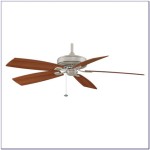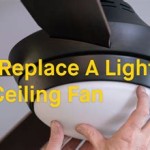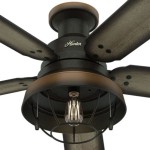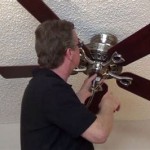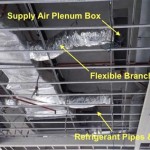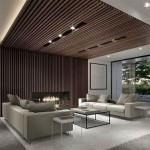DIY Coffered Ceiling Ideas: Elevating Your Home's Aesthetics
Coffered ceilings, characterized by a grid-like pattern of recessed panels, offer a sophisticated and visually appealing architectural detail that enhances the overall aesthetic of a room. Traditionally, constructing coffered ceilings involved complex carpentry and significant expense. However, with readily available materials and innovative DIY techniques, homeowners can now achieve the luxurious look of a coffered ceiling without breaking the bank. This article explores various DIY coffered ceiling ideas, providing guidance on design considerations, material choices, and installation processes.
Planning and Design Considerations
Before embarking on a DIY coffered ceiling project, meticulous planning is paramount. This phase involves evaluating the room's dimensions, architectural style, and desired aesthetic. The size and spacing of the coffers should be proportional to the room's dimensions. A small room might benefit from smaller, more closely spaced coffers, while a larger room can accommodate larger coffers with wider spacing. The existing ceiling height is also a critical factor; lower ceilings may feel constricted with deeply recessed coffers, whereas higher ceilings can handle more dramatic designs.
The architectural style of the home should also inform the design choices. In a traditional home, a coffered ceiling with classic details such as crown molding and intricate paneling would be appropriate. In a more modern home, a simpler, more minimalist coffered ceiling design with clean lines and geometric shapes might be a better fit. Consideration should be given to the existing lighting fixtures. Recessed lighting can be integrated into the coffers to provide ambient illumination, while a central chandelier can serve as a focal point. The color of the coffered ceiling should complement the existing wall color and overall décor. A contrasting color can create a dramatic effect, while a similar color can provide a more subtle and cohesive look.
Furthermore, accurately measuring the ceiling is crucial for proper layout and material calculation. Create a detailed sketch of the ceiling, including the dimensions of the room, the location of any existing fixtures, and the desired dimensions and spacing of the coffers. This sketch will serve as a blueprint for the entire project, ensuring accurate material procurement and a seamless installation process. Digital design tools can be used to visualize different coffered ceiling designs and their impact on the room's appearance. These tools allow homeowners to experiment with different layouts, colors, and lighting options before committing to a specific design.
Material Selection and Cost-Effective Alternatives
The choice of materials significantly impacts the overall cost and aesthetic of the coffered ceiling. Traditional coffered ceilings are often constructed from solid wood, which is both expensive and requires specialized carpentry skills. However, several cost-effective alternatives can achieve a similar look without the high price tag. These alternatives include Medium-Density Fiberboard (MDF), Poplar, and even PVC trim.
MDF is a versatile and affordable material that can be easily cut, shaped, and painted. It provides a smooth surface for painting and is less prone to warping than solid wood. Poplar is a hardwood that is relatively inexpensive and easy to work with. It can be stained or painted to match any décor. PVC trim is a durable and moisture-resistant material that is ideal for bathrooms or kitchens. It is also lightweight and easy to install. Another option is to utilize pre-fabricated coffers, which are available in various sizes and styles. These coffers can be easily installed with basic carpentry skills, reducing the overall installation time and cost.
When selecting materials, consider the overall weight of the coffered ceiling. Heavy materials may require additional structural support, increasing the complexity and cost of the project. Lightweight materials, such as MDF or PVC trim, are easier to handle and install, reducing the risk of ceiling sag. The chosen materials should also be compatible with the existing ceiling material. If the ceiling is drywall, the coffered ceiling components can be attached using construction adhesive and screws. If the ceiling is plaster, a more robust attachment method, such as lag bolts, may be required.
Installation Techniques and Step-by-Step Guide
Installing a DIY coffered ceiling requires careful planning, precise measurements, and attention to detail. The following step-by-step guide outlines the general installation process, which may need to be adapted based on the specific design and materials used.
Step 1: Prepare the Ceiling: Before beginning the installation, ensure that the ceiling is clean, dry, and free of any loose debris. Repair any cracks or imperfections in the ceiling surface. Locate and mark the ceiling joists using a stud finder. These joists will provide support for the coffered ceiling components.
Step 2: Layout the Grid: Using the detailed sketch created during the planning phase, mark the location of the coffers on the ceiling. Use a laser level or chalk line to ensure that the lines are straight and square. The accuracy of this step is crucial for achieving a professional-looking result.
Step 3: Install the Perimeter Frame: Construct a perimeter frame using the chosen material. This frame will serve as the foundation for the coffered ceiling. Attach the frame to the ceiling joists using screws and construction adhesive. Ensure that the frame is level and securely attached.
Step 4: Install the Crossbeams: Cut the crossbeams to the appropriate length and attach them to the perimeter frame using screws and construction adhesive. These crossbeams will form the grid-like pattern of the coffered ceiling. Ensure that the crossbeams are evenly spaced and aligned with the layout marks on the ceiling. For larger spans, consider adding additional support beams to prevent sagging.
Step 5: Install the Coffered Panels: Cut the coffered panels to fit within the grid formed by the crossbeams. Attach the panels to the crossbeams using construction adhesive and finishing nails. Ensure that the panels are flush with the crossbeams and that the seams are tight. Depending on the complexity of the design, the panels can be simple flat pieces or more elaborate moldings.
Step 6: Add Molding and Trim: Enhance the aesthetic of the coffered ceiling by adding molding and trim. Crown molding can be installed along the perimeter of the ceiling to create a more finished look. Decorative trim can be added to the crossbeams and coffered panels to enhance the visual appeal. Use a miter saw to cut the molding and trim at the correct angles. Attach the molding and trim using finishing nails and construction adhesive.
Step 7: Finishing Touches: Once the coffered ceiling is installed, fill any nail holes or gaps with wood filler. Sand the surface smooth and prime the entire ceiling. Apply two coats of paint in the desired color. Consider adding recessed lighting or a central chandelier to complete the look.
Throughout the installation process, prioritize safety by wearing appropriate personal protective equipment, such as safety glasses and gloves. Ensure that all power tools are in good working condition and that the work area is well-ventilated. Seek assistance from a qualified professional if any aspect of the installation process is unclear or beyond one's skill level. A properly installed coffered ceiling can transform a room, adding a touch of elegance and sophistication that enhances the overall value of the home.

Diy Coffered Ceilings With Moveable Panels Renovation Semi Pros

Faux Coffered Ceiling Confessions Of A Serial Do It Yourselfer

Coffered Ceiling Diy Step By Install Guide Arched Manor

Easy Diy Coffered Ceiling Idea Simple Low Profile Design Steps And Abbotts At Home

Diy Coffered Ceilings With Moveable Panels Renovation Semi Pros

Diy Rustic Coffered Ceiling Remodelando La Casa

Easy Diy Coffered Ceiling Idea Simple Low Profile Design Steps And Diseño De Techo Artesonado Disenos Unas

9 Coffered Ceiling Ideas Family Handyman

How To Create A Coffered Ceiling

Coffered Ceiling Systems Easy To Purchase Install Diy
Related Posts

